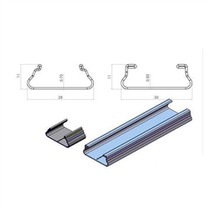When crops are planted in greenhouses, pay attention to adjusting the humidity!

We can adjust the humidity of the greenhouse from several aspects, and there are many methods. Let's introduce it to you in detail!
1. Ventilation: On the issue of reducing humidity, ventilation is one of the simplest and most effective methods to adjust the humidity in the greenhouse. The humidity in the greenhouse is generally higher than that of the outdoor, and the humidity introduced through ventilation is relatively low. The air can dilute the indoor air.
2. Heating: Under the condition that the indoor air has a certain moisture content, increasing the temperature of the greenhouse by heating can naturally reduce the relative humidity of the indoor air. If ventilation and heating can be combined, it is effective to reduce the relative humidity of indoor air.
3. Improve irrigation methods: The use of water-saving irrigation measures such as drip irrigation and micro-sprinkler irrigation in greenhouses can reduce the water collection on the ground, significantly reduce ground evaporation, and reduce the relative humidity of the air in a single greenhouse. Similarly, the use of plastic film can also reduce the evaporation of ground water vapor: for example, after the greenhouse is covered with plastic film, the relative humidity of the greenhouse air drops from 95 percent -100 percent to 75 percent -80 percent .
4. Moisture absorption: We can use hygroscopic materials for adjustment, such as lithium oxide, which absorbs moisture in the air to reduce the moisture content in the air, thereby reducing the relative humidity of the air.







